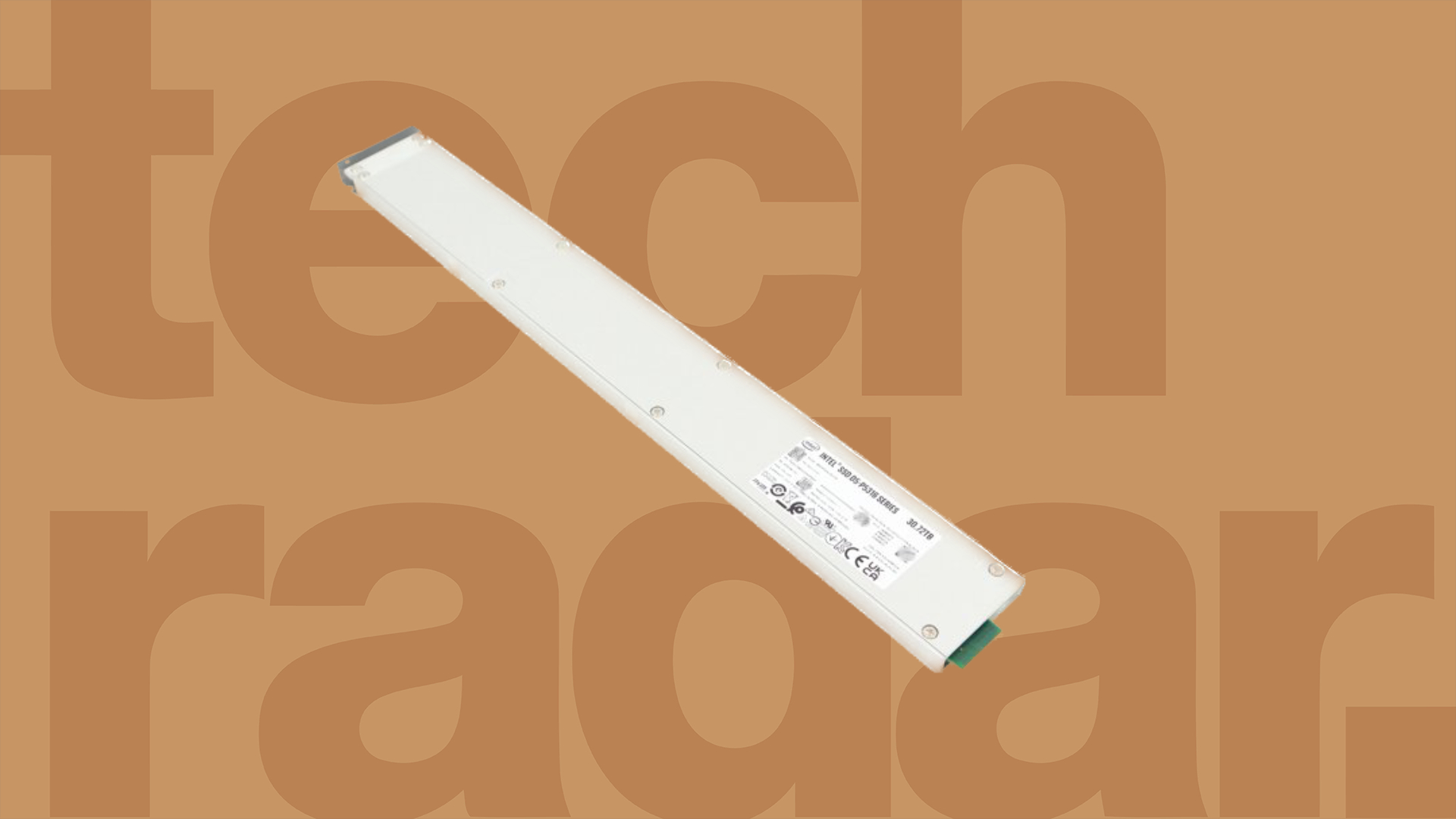Intel’s 31TB SSD sees huge price drop at Walmart but it won’t fit your PC
Almost as cheap as chips, at least per TB but it is a server only product

It’s been almost five years since Samsung unveiled what was then the world’s biggest solid state drive (SSD) in terms of capacity. The PM1643 was, for a very long time, the apex storage device but it did come with a hefty tag. Back in 2020, it retailed for just under $8,400 and three years later, still commands a hefty $4,939 sticker price.
A relatively newcomer is about to change all that, the Intel SSDPFWNV307TZ (soon to become Solidigm SSD D5-P5316) has dropped in price and now costs less than $2,699 at Walmart (and Newegg). At a little over $87/TB, it is quite an achievement given that 4TB PCIe Gen4 drives struggle to smash the $100/TB floor.
At the time of writing, a 4TB WD_Black SN850 retailed for $399.89 - which makes it TB for TB, more expensive than Solidigm’s - although Kingston’s NV2 2TB SSD could be had for $110. Born out of the acquisition of Intel’s NAND business back in 2021 and the subsequent spin off by SK Hynix, Solidigm’s D5-P5316 uses 144-layer QLC technology to reach write/read speeds of 3.6GBps and 7GBps respectively.
As it is a EDSFF L 9.5mm drive, it can be used in a compatible 1U server rack to reach a 1PB capacity but it won’t fit your laptop or desktop since it is a server product, it comes with support for hardware encryption (256-bit AES), temperature monitoring and logging as well as enhanced power data loss protection.
Solidigm states that the drive comes with a 5-year warranty as well as a lifetime between 23PBW (64K random) and 104PBW (64K sequential).
The rise of super SSDs
High capacity SSDs are gradually becoming mainstream; Nimbus Data’s Exadrive SSD reaches capacities of up to 100TB but costs about $40,000, a 5x increase in price compared Solidigm’s D5-P5316.
Kioxia, Seagate, Samsung, Micron and Solidigm alongside a host of smaller players (Nimbus Data, Dapustor Union Memory, Teamgroup, ScaleFlux and Memblaze) are vying for the enterprise market as consumer demand for storage components is petering.
Sign up to the TechRadar Pro newsletter to get all the top news, opinion, features and guidance your business needs to succeed!
While hard disk drives are still affordable, they consume more electricity (and dissipate more heat), are more likely to break down (because of mechanical parts), are generally heavier, are far slower and have only slowly grown in capacity. 30TB hard disk drives are expected to come later this year but for now 26TB is the absolute maximum available capacity on the market.
The only two things that make hard drives still attractive to hyperscalers like Microsoft, Google, Facebook are price (as low as $17 per TB, five times lower than the P5316) and the huge installed based of existing hard drives which makes it easier to just replace HDD rather than rip-and-replace or upgrade.
While some services like cloud storage or cloud backup will happily use hard drives, others like web hosting will gladly get rid of the bottleneck that spinning disks are.
With Kioxia, Samsung and Micron already ramping up production of NAND technology that uses 230 layers or more (50% extra capacity and more), it’s only a matter of time before SSDs reach parity, on a per TB basis, with hard disk drives.

Désiré has been musing and writing about technology during a career spanning four decades. He dabbled in website builders and web hosting when DHTML and frames were in vogue and started narrating about the impact of technology on society just before the start of the Y2K hysteria at the turn of the last millennium.